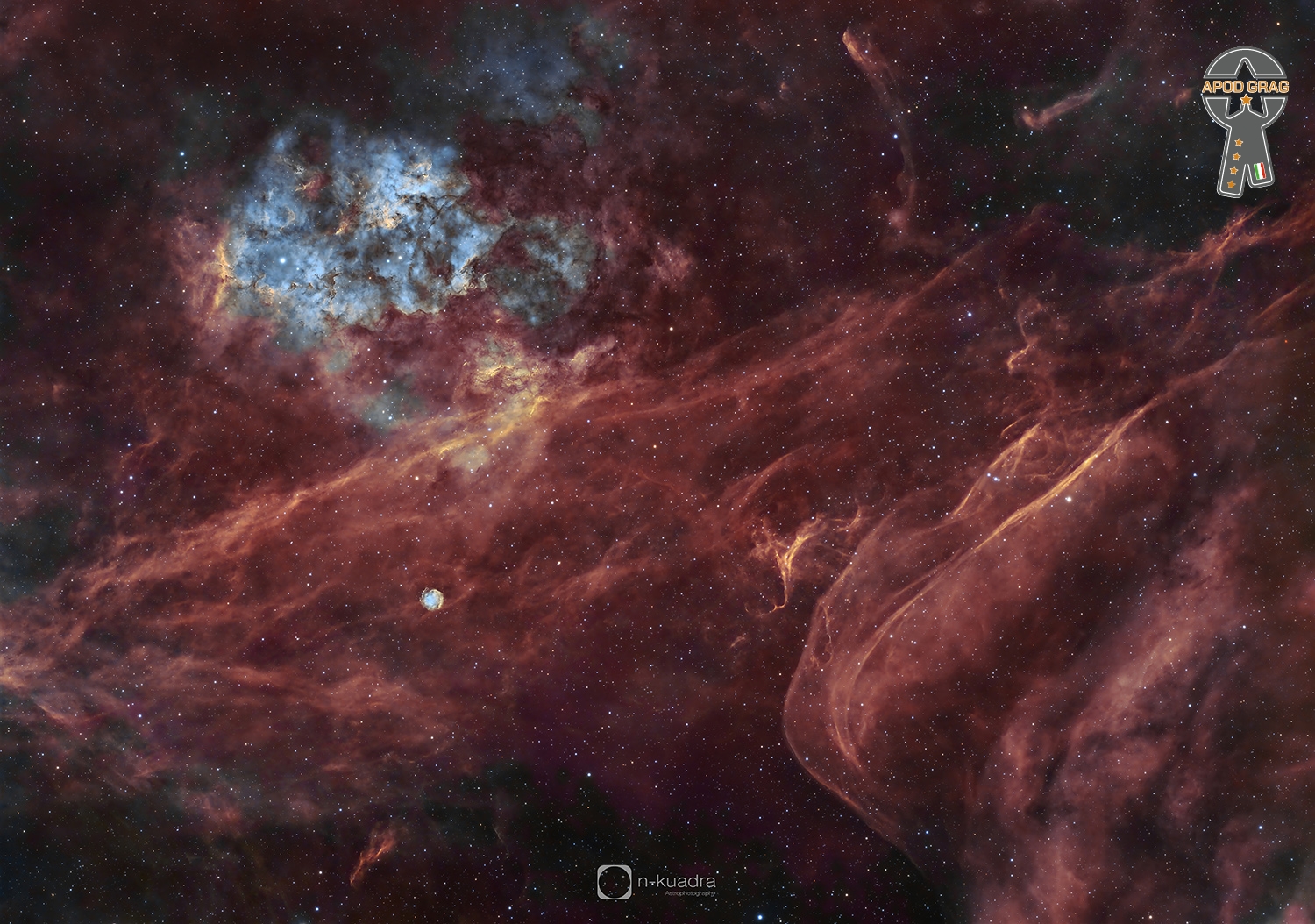Cosmos Sh2-115 Abell 71
It is located in the northern part of the constellation, about 2.5° northwest of the bright star Deneb; the most suitable period for its observation in the evening sky falls between the months of July and December and is considerably easier for observers located in the regions of the Northern Hemisphere terrestrial.
It is a H II region of notable extension with an oval shape and crossed in a northwest-southeast direction by a dark band that divides it apparently in two equal parts: the eastern part is dominated by the presence of a small open cluster, known as Berkeley 90, with which it is physically associated, while the western part lies in the direction of the star variable α2 CVn a> is just 148 Sun however, the distance of this star from the equal to 5.63;average apparent magnitude HD 196178 (V2015 Cyg), of (481 light years), significantly lower than that estimated for the nebula, about 2300 parsec (7500 light years). The stars responsible for the ionization of gases are LS III +46 12, of spectral class O6III, DM46 2972, of class O9.5V, and DM46 2978, of class B0III; the first of these dominates the Berkeley 90 cluster. The star BD+46 2972 also appears in the same field, whose distance is however larger than the nebula, therefore a physical relationship with it would be excluded.
